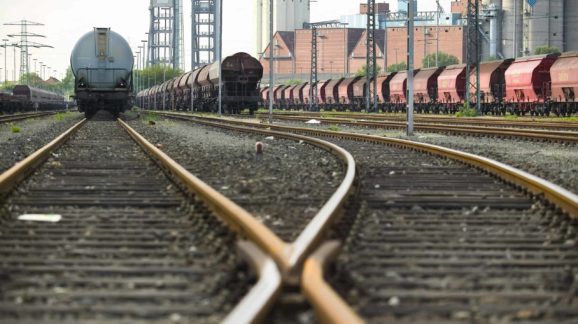California’s Gov. Newsom Slams Brakes on California Bullet Train

 California Governor Gavin Newsom (D) on February 12th unexpectedly slammed the brakes on the state’s high-speed rail project. The project “as currently planned, would cost too much and take too long” to build, Newsom explained during his first State of the State address. “Right now, there simply isn’t a path to get from Sacramento to San Diego, let alone from San Francisco to L.A. I wish there were,” he stated.
California Governor Gavin Newsom (D) on February 12th unexpectedly slammed the brakes on the state’s high-speed rail project. The project “as currently planned, would cost too much and take too long” to build, Newsom explained during his first State of the State address. “Right now, there simply isn’t a path to get from Sacramento to San Diego, let alone from San Francisco to L.A. I wish there were,” he stated.
As originally approved by ballot initiative in 2008, the entire 800-mile high-speed rail system connecting all of California’s major population centers from San Francisco to San Diego, was to be “constructed and in revenue service by 2020.” Not even close.
The network linking the Bay Area to Los Angeles was to be the “backbone” of the system and built first. However, the High-Speed Rail Authority’s latest (June 2018) business plan projected that the Bay Area-Los Angeles link would not be completed until 2033.
Worse, the project’s anticipated costs have ballooned from $33 billion to $77 billion, with some scenarios putting the figure as high as $98 billion.
Former California Assemblyman and Texas Public Policy Foundation Vice President Chuck Devore has warned for years that the high-speed rail project is an unsustainable boondoggle. So the debate is now settled, right?
No. Gov. Newsom isn’t giving up. Rather than return a $3.5 billion federal grant to the U.S. Treasury, he plans to use the money to complete a small piece of the project—a 150-mile line between Bakersfield and Merced. Newsom also vowed to “push for more federal funding and private dollars” to connect the Central Valley to the other parts of the state.
Writing in Fox News today, Mr. Devore warns that further investment in the project will be throwing good money after bad.
First, “instead of traveling from L.A. to San Francisco in 2 hours and 40 minutes—compared to commercial flights taking an hour, plus TSA security time—the travel time for the fastest train stretched out to more than 3 hours.”
Second, “projected ticket prices doubled—more than airfare would cost—as expected ridership plummeted.”
Third, “not a penny of the billions in expected private investment ever materialized, leaving California and federal taxpayers on the hook for billions, with about $3.5 billion in federal funds spent and about a similar amount of state funds—much of it from California’s costly cap-and-trade climate change program, which has increased gasoline prices by 10-12 cents per gallon.”
Fourth, “California voters approved their high-speed rail project more than 10 years ago—and not a single passenger has yet ridden the train. And there’s no operational date in sight.” Indeed, “at the rate money is being spent on the project, it would take more than 100 years to finish.”
There’s a lesson here for national policymakers. “That California, America’s most populous state led by its most progressive politicians, would abandon a government-run high-speed rail system within a week of the Green New Deal’s introduction in Congress says much about the Green New Deal’s viability,” Devore comments.
The Green New Deal resolution advocates “investment in” high-speed rail among other efforts to overhaul the U.S. transportation sector. The FAQ document accompanying the resolution, although later removed from Rep. Alexandria Ocasio-Cortez’s (D-NY) website, was particularly bullish on high-speed rail. It contemplated a “build out” of high speed rail “at a scale where air travel stops becoming necessary.”
Consider this bit of irony. Merced Airport has flights to 40 cities in 14 states. Bakersfield is not among the destinations. If built, the Merced to Bakersfield line will not cut back on air travel from Merced. Rather, it will help Central Valley residents dash to the airport.